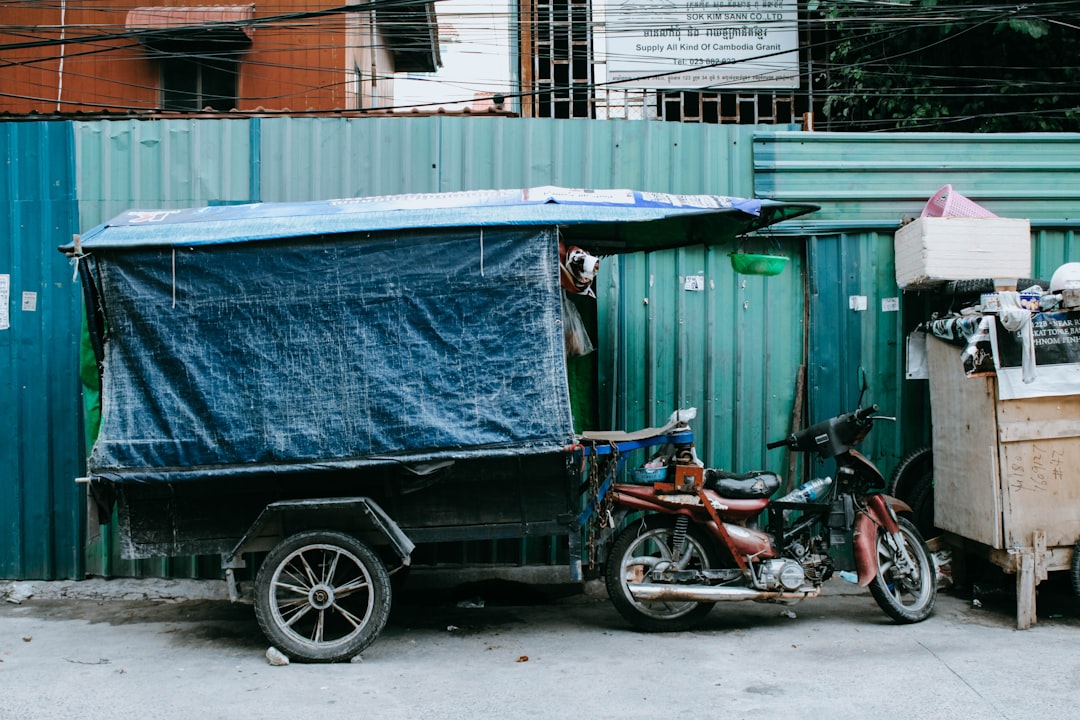Embarking on international adventures often means encountering new cultures, cuisines, and customs. But have you ever considered the differences in how countries manage their waste? Recycling, a cornerstone of environmental sustainability, varies significantly from one nation to another. Understanding these diverse standards isn’t just about being a responsible tourist; it’s about contributing positively to the local environment and ensuring your efforts truly make a difference.
Did you know that while some countries boast recycling rates exceeding 60%, others struggle to reach 20%? This disparity highlights the complex interplay of policy, infrastructure, and public engagement. This guide will take you on a journey through the fascinating world of international recycling, offering insights into the unique systems of various countries. We’ll explore common practices, specific rules, and practical tips to help you recycle responsibly wherever your travels take you.
The German Dual System: Precision and Responsibility
Germany is often lauded as a global leader in recycling, thanks to its highly organized and comprehensive “Dual System.” Introduced in the early 1990s, this system places responsibility on producers for the entire lifecycle of their packaging. It’s designed to ensure that packaging waste is collected, sorted, and recycled efficiently, reducing the burden on municipal waste services.
German households typically separate their waste into several distinct bins, each color-coded for specific materials. This meticulous approach has led to some of the highest recycling rates in the world.
Key German Recycling Categories:
- Yellow Bin/Bag (Gelber Sack/Tonne): For lightweight packaging (plastics, composite materials like milk cartons, aluminum foil, tin cans).
- Blue Bin (Blaue Tonne): For paper and cardboard (newspapers, magazines, cardboard boxes).
- Brown Bin (Biotonne): For organic waste (food scraps, garden waste).
- Glass Containers (Glascontainer): Separate bins for clear, brown, and green glass, often found at public collection points. Lids must be removed.
- Deposit System (Pfand): A mandatory deposit is paid on most single-use and reusable beverage containers (plastic bottles, glass bottles, aluminum cans) and refunded upon return to supermarkets.
Traveler Tip: When in Germany, always look for the “Grüner Punkt” (Green Dot) symbol on packaging, indicating it’s part of the Dual System. Remember to rinse containers and remove lids before sorting.

Japan’s Meticulous Sorting: A Cultural Imperative
Japan’s approach to waste management is renowned for its extreme precision and the sheer number of categories. Recycling here is not just a civic duty; it’s deeply ingrained in the culture, reflecting a national commitment to cleanliness and resource efficiency. The rules can vary significantly by municipality, making it crucial for residents and visitors to check local guidelines.
While the exact categories differ, common divisions include burnable waste, non-burnable waste, various types of plastic, glass, cans, paper, and even specific categories for PET bottles and food trays. Some items, like batteries or small electronics, require special collection days or drop-off points.
Common Japanese Recycling Categories:
- Burnable Waste: Kitchen waste, paper scraps, wood. Collected frequently.
- Non-Burnable Waste: Ceramics, metal, glass (not bottles), small appliances. Collected less frequently.
- Recyclables:
- PET Bottles: Rinsed, labels removed, caps separated.
- Plastic Containers & Packaging: Marked with a plastic symbol (プラ), rinsed.
- Cans: Aluminum and steel, rinsed.
- Glass Bottles: Sorted by color, rinsed.
- Paper: Newspapers, magazines, cardboard, milk cartons (often flattened and tied).
- Bulky Waste: Furniture, large appliances, often requires a fee and special collection.
In many Japanese cities, residents receive detailed calendars and guides outlining specific collection days and sorting rules for each waste type. Mis-sorted waste is often left uncollected, serving as a strong incentive for proper disposal.
United States: A Patchwork of Local Rules
Unlike the centralized systems found in some European or Asian nations, recycling in the United States is largely managed at the local level. This means that recycling rules can vary dramatically from one city or county to another, even within the same state. What’s recyclable in New York City might not be in Los Angeles, or even a neighboring suburb.
The most common system is “single-stream recycling,” where all recyclables (paper, plastic, metal, glass) are placed into one bin. However, some areas still require “multi-stream” separation. Contamination is a significant challenge in the U.S., often leading to entire batches of recyclables being sent to landfills.
Common U.S. Recycling Variations:
- Plastics: Often identified by resin codes (numbers 1-7) within a chasing arrows symbol. However, not all numbers are accepted everywhere. Numbers 1 (PET) and 2 (HDPE) are most commonly accepted.
- Glass: Some areas accept all colors, others require separation by color, and some don’t accept glass at all due to breakage and contamination issues.
- Paper & Cardboard: Generally accepted, but rules vary for items like shredded paper, greasy pizza boxes, or coated paper.
- Metals: Aluminum and steel cans are widely accepted.
Crucial Advice: When traveling in the U.S., always check the local municipality’s waste management website or look for signage at your accommodation. “When in doubt, throw it out” is a common, albeit imperfect, mantra to prevent contamination.

South Korea: Advanced Technology and Food Waste Focus
South Korea has implemented one of the most technologically advanced and rigorous recycling systems, particularly notable for its innovative approach to food waste. The country has achieved impressive recycling rates through a combination of mandatory separation, advanced collection systems, and a strong emphasis on resource recovery.
A key feature is the “Pay-as-You-Throw” system for general waste, where residents purchase designated bags, incentivizing waste reduction. For food waste, many areas use RFID-enabled bins that weigh the waste and charge residents based on the amount, which is then converted into animal feed or fertilizer.
South Korean Recycling Categories:
- Food Waste (음식물 쓰레기): Collected separately, often using specialized RFID bins or designated bags. Must be drained of water.
- General Waste (일반 쓰레기): Disposed of in specific, paid-for bags (종량제 봉투).
- Recyclables (재활용품):
- Plastics (플라스틱): PET bottles, plastic containers (rinsed, labels removed).
- Paper (종이): Newspapers, cardboard, milk cartons (flattened, tied).
- Glass Bottles (유리병): Sorted by color.
- Cans (캔): Aluminum and steel.
- Vinyl/Film (비닐류): Plastic bags, wrapping film (clean).
- Styrofoam (스티로폼): Clean, white styrofoam.
The strict enforcement and clear guidelines make South Korea a model for effective waste management.
United Kingdom: Local Council Variations and EPR
Similar to the U.S., recycling in the United Kingdom is primarily managed by local councils, leading to considerable variation across different regions. While there’s a national framework, the specifics of what can be recycled and how often collections occur depend on your exact location. The UK is also moving towards an Extended Producer Responsibility (EPR) scheme to make producers more accountable for packaging waste.
Most councils offer kerbside collections, often providing multiple bins or boxes for different materials. Contamination remains a challenge, and public awareness campaigns are ongoing to improve sorting accuracy.
Typical UK Recycling Categories:
- Paper & Cardboard: Newspapers, magazines, junk mail, cardboard boxes. Often collected in a separate bin or bag.
- Plastics: Commonly plastic bottles (PET and HDPE) and sometimes plastic pots, tubs, and trays. Check local council for specifics on numbers accepted.
- Glass Bottles & Jars: Often collected in a separate bin or at bottle banks. Lids usually removed.
- Cans & Foils: Aluminum and steel cans, aluminum foil (clean).
- Food Waste: Many councils offer separate food waste collections, often in small caddies, for composting or anaerobic digestion.
- Garden Waste: Separate collection for garden clippings, leaves, etc., often a paid service.

For detailed information on waste management practices across Europe, including the UK, you can refer to reports from the European Environment Agency. For instance, their publication on Waste Management Practices in Europe provides comprehensive insights into various national systems.
Navigating Global Recycling: A Quick Reference
To help you quickly grasp the general approach in different regions, here’s a simplified overview. Remember, these are broad generalizations, and local rules always take precedence.
| Country/Region | Key Characteristic | Common Materials Separated |
|---|---|---|
| Germany | Highly precise, producer responsibility, deposit system. | Light packaging, paper, organic, glass (color-sorted), Pfand bottles. |
| Japan | Extremely meticulous, cultural imperative, varying local rules. | Burnable, non-burnable, PET, plastic packaging, cans, glass, paper. |
| United States | Decentralized (local rules), common single-stream, contamination issues. | Paper, cardboard, plastics (1 & 2 most common), glass, metals. |
| South Korea | Tech-advanced, strong food waste focus, “Pay-as-You-Throw”. | Food waste, general waste (paid bags), plastics, paper, glass, cans, vinyl, styrofoam. |
| United Kingdom | Local council variations, kerbside collections, EPR focus. | Paper, cardboard, plastics (bottles, pots, tubs, trays), glass, cans, food waste. |
Beyond the Bin: Sustainable Travel Practices
Understanding recycling rules is just one part of being a sustainable traveler. Minimizing your waste in the first place is even more impactful. By adopting a “reduce, reuse, recycle” mindset, you can significantly lessen your environmental footprint wherever you go.
Practical Tips for Eco-Conscious Travelers:
- Carry Reusables: Bring a reusable water bottle, coffee cup, and shopping bag to avoid single-use plastics.
- Choose Mindfully: Opt for products with minimal packaging or those made from recycled materials.
- Support Local: Buy local produce and goods, which often have a lower carbon footprint due to reduced transportation.
- Educate Yourself: Before arriving at your destination, do a quick search for local recycling guidelines. Many city websites have dedicated sections for waste management.
Conclusion: Your Role in Global Sustainability
From Germany’s precise dual system to Japan’s meticulous sorting and South Korea’s high-tech food waste management, global recycling standards are as diverse as the cultures themselves. While the specifics may vary, the underlying goal remains universal: to protect our planet by responsibly managing waste and conserving valuable resources.
As a traveler, your awareness and effort, no matter how small, contribute to this global endeavor. By taking a few moments to understand local recycling rules and embracing sustainable practices, you become an ambassador for responsible tourism.
What unique recycling practices have you encountered on your travels? Share your experiences and tips in the comments below to help fellow adventurers navigate the world of waste management!
